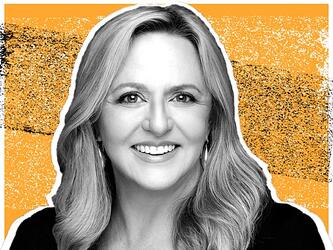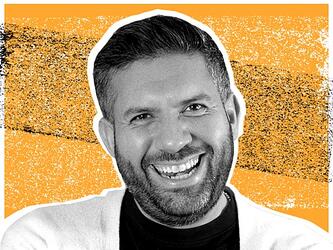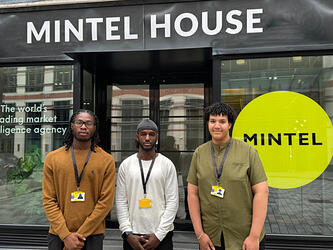A sense of direction
Do you have a good sense of direction? Not just expert compass-reading skills, but an innate sense of which way to head? While some animals use the Earth’s magnetic field to determine the right way to go when migrating, for humans, a perfect sense of direction requires an extra tool of some sort.
But what if your body was ‘told’ every time you pointed north – how would that affect your sense of place and understanding of your environment? Researchers are trying to find out by questioning people who have signed up for Cyborg Nest’s North Sense.
The North Sense allows people to sense the electromagnetic field by attaching a small device to their bodies that vibrates whenever they face north. In this way, the device acts as an exo-sense – it sits outside the body, but is permanently attached, like other sense organs.
This human-enhancement technology was designed by Cyborg Nest, which was co-founded by Scott Cohen and Liviu Babitz. Now, Carl Smith, director of the Learning Technology Research Centre and principle research fellow at Greenwich-based digital media and design college Ravensbourne, is leading a qualitative study into the effects of this sensory augmentation.
Babitz says the inspiration behind North Sense was to understand things that had been impossible previously. “Everything we ever created, we created because we have senses. If we have more senses, we are lifting the creation glass ceiling of humanity exponentially higher,” he claims.
The decision to develop North Sense was easily made. “We had a list of ideas we were playing with,” says Babitz. “We saw that [the sense of north] was part of everything we know. Every tradition has a north in it; there are theories that humans used to have this sense in the past and lost it; there are animals with this sense. It looked like something that is a big part of our existence, although it’s not something people speak about. It is there in the background all the time.”
The device is connected to the body using two piercings that form an anchoring system. The vibration when you face north is very slight. “You are the same person, with the same life, but there is a piece of knowledge that you have that others do not. Your rhythm and style of life will determine how that piece of information is used. It can start connecting to your memories – how you remember and understand spaces and orientation. Some North Sense owners describe it as the helicopter view; you can always see yourself from above. You’re not just walking somewhere – you know where you’re walking,” explains Babitz.
The device is taken off to charge every day or two, but you can’t turn it off. Babitz says the company has sold about 300 devices to a wide range of people. “We have lawyers and accountants, people with tattoos, sailors, artists, tech CEOs; the age range is from 18 to 67.”
Smith has about 30 of these people in his qual study, which he thinks can address some fundamental questions about this type of exo-sense. “What does it mean when you become the technology? I’m interested in the neuro ethics of the debate; the philosophy of these augmentations. I’m looking at creating a new science around this: contextology – the science of context engineering.”
North Sense, he says, is an objective sense, whereas most senses are subjective. “It makes it an interesting super-sense, as it could affect all the other senses,” adds Smith, who explains that his “will be a longitudinal study with interviews, and we’re doing a literature review. I want to build a mobile app and to gamify it. The next phase will be functional magnetic resonance imaging (FMRI) to look at the brain and if there are any changes. We’re asking people their motivations, expectations, if they have any other implants or body modifications, the reactions from others, and where they put it on their body.”
From the effects on the individual to the effects on society, Smith is ambitious for this research. If it turns out that it’s dangerous, that will come out too, he says. Regardless, he wants the research to contribute to the knowledge base that can be used on future builds.

We hope you enjoyed this article.
Research Live is published by MRS.
The Market Research Society (MRS) exists to promote and protect the research sector, showcasing how research delivers impact for businesses and government.
Members of MRS enjoy many benefits including tailoured policy guidance, discounts on training and conferences, and access to member-only content.
For example, there's an archive of winning case studies from over a decade of MRS Awards.
Find out more about the benefits of joining MRS here.













0 Comments